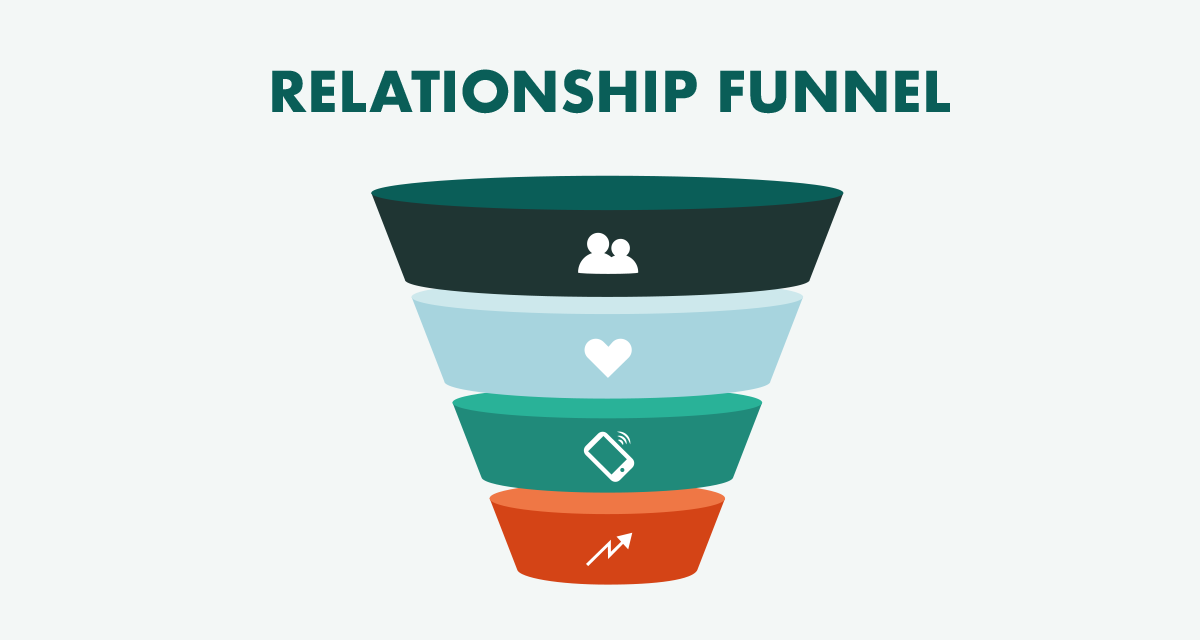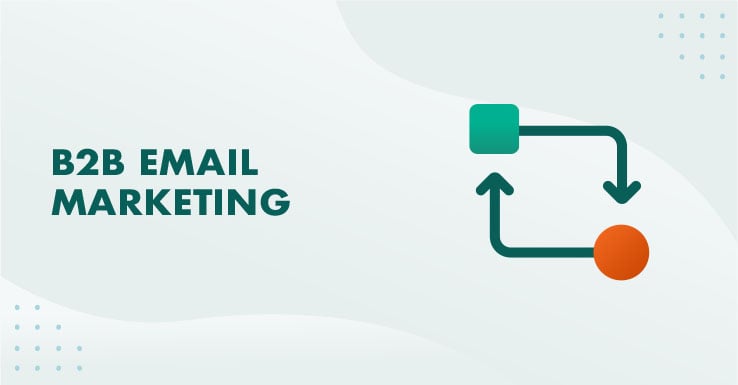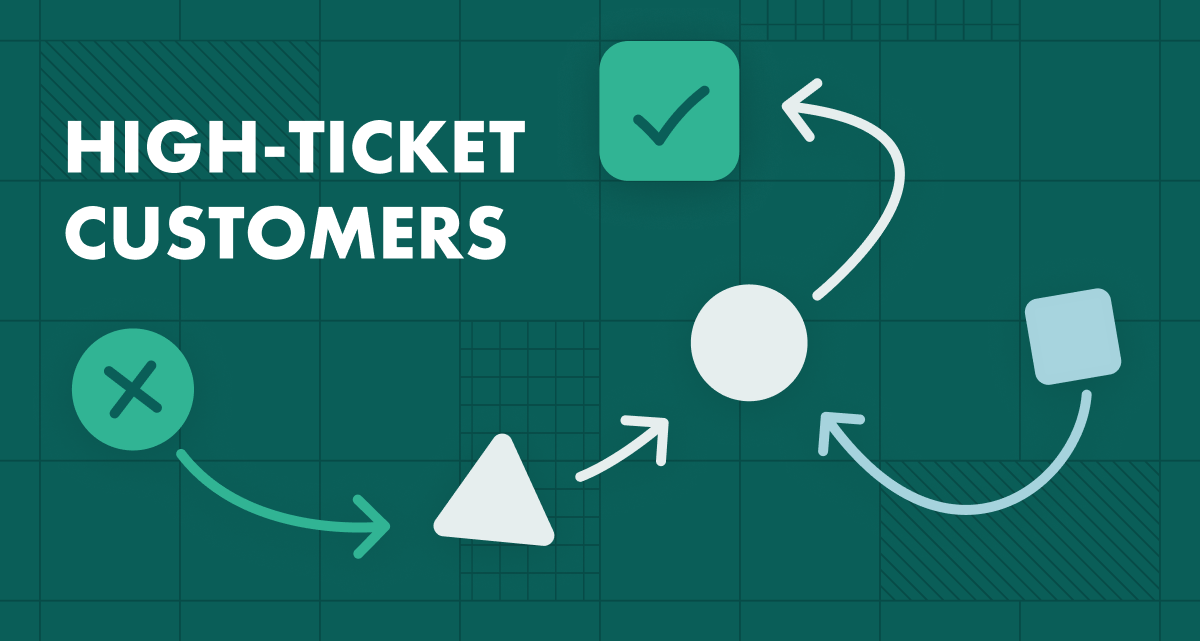Today’s leading companies are turning toward relationship marketing strategies that build lasting relationships with new customers, while strengthening the connections with their existing customers, and in this way encourage loyalty.
Many studies proved that having long-term relationships with customers, brings your more profit.
According to Fundera, 65% of a company’s business comes from existing customers, and 43% of customers spend more money with brands they’re loyal to.
However, some companies are struggling with becoming customer-centric and consistently delivering positive experiences. As a result, customers are switching to competitors.
In CallMiner’s Churn Index 2020 report, the estimated cost of customer churn is an astounding $168 BILLION, of which at least $35.3 billion could have been avoided!
So what can you do to prevent customers from leaving while providing experiences that attract and keep them for the long term?
You may need to reevaluate how you sell, and discover the potential a relationship funnel.
Let’s look at how investing in a relationship funnel can help your business achieve growth and inspire meaningful relationships with your customers.
Relationship funnel vs. sales funnel
Although sharing a similar goal, these are not the same.
A sales funnel is focused on the buying process that results in bringing in new and recurring customers. Relationship funnels, on the other hand, focus on building trust and giving value with an aim to establish long-lasting relationships with customers.
So why are relationships so important?
Similarly to personal relationships, business relationships are built on mutual benefit and trust.
Relationship funnels, as the name suggests, are focused on relationships first and selling second.
- Build a relationship BEFORE selling a solution
- Sell a solution AFTER establishing trust
Even though this may seem counterintuitive for your company’s growth strategies, especially since sales aim to maximize returns as quickly as possible. In the long-term it’s relationships that last!
When it comes to a relationship funnel, it takes more time to establish trust and build relationships with customers.
Fortunately, people are drawn toward positive experiences and feel more willing to buy when they have a relationship with a company. A study by Walker found that customer experience is more influential than price and product as a brand’s key differentiator.
With this in mind, let’s look at the various stages of a relationship funnel and explore ways to implement a relationship strategy for your business.
These stages include building relationships, nurturing relationships, leveraging relational experience, and measuring relational performance.
Building relationships
Whether it’s a Facebook ad, a Google search result, or a friend’s referral, customer relationships begin the moment a person discovers your business.
The first step to building relationships is to create customer profiles that outline your potential customers’ unique traits and specific needs. Customer profiles are a powerful tool that gives your marketing, sales, and support teams a 360-degree overview of your customers by capturing:
- Age
- Income
- Location
- Hobbies
- Job title
- Purchase habits
- Challenges or pain points
- Goals or motivations
- Turnover
One way to capture everything about your potential and existing customers is by introducing a Customer Relationship Management (CRM) system.
The second step is to discover what people are saying about your business by using a research method called Voice of Customer (VoC).
By capturing VoC, you can create strategies to connect and engage with customers at every touchpoint in their journey with your business. You also have the ability to:
- Identify warning signs of problems in your business via customer complaints, negative feedback and reviews,
- Personalize your products and services to satisfy the wants and needs of your customers,
- Increase customer retention and satisfaction
According to a study Aberdeen Group, titled “The Business Value of Building a Best-In-Class VOC Program,” capturing VoC and customer data is not enough to increase customer satisfaction. Instead, best-in-class organizations convert their data into actionable strategies that combine effective processes and technologies to achieve results.
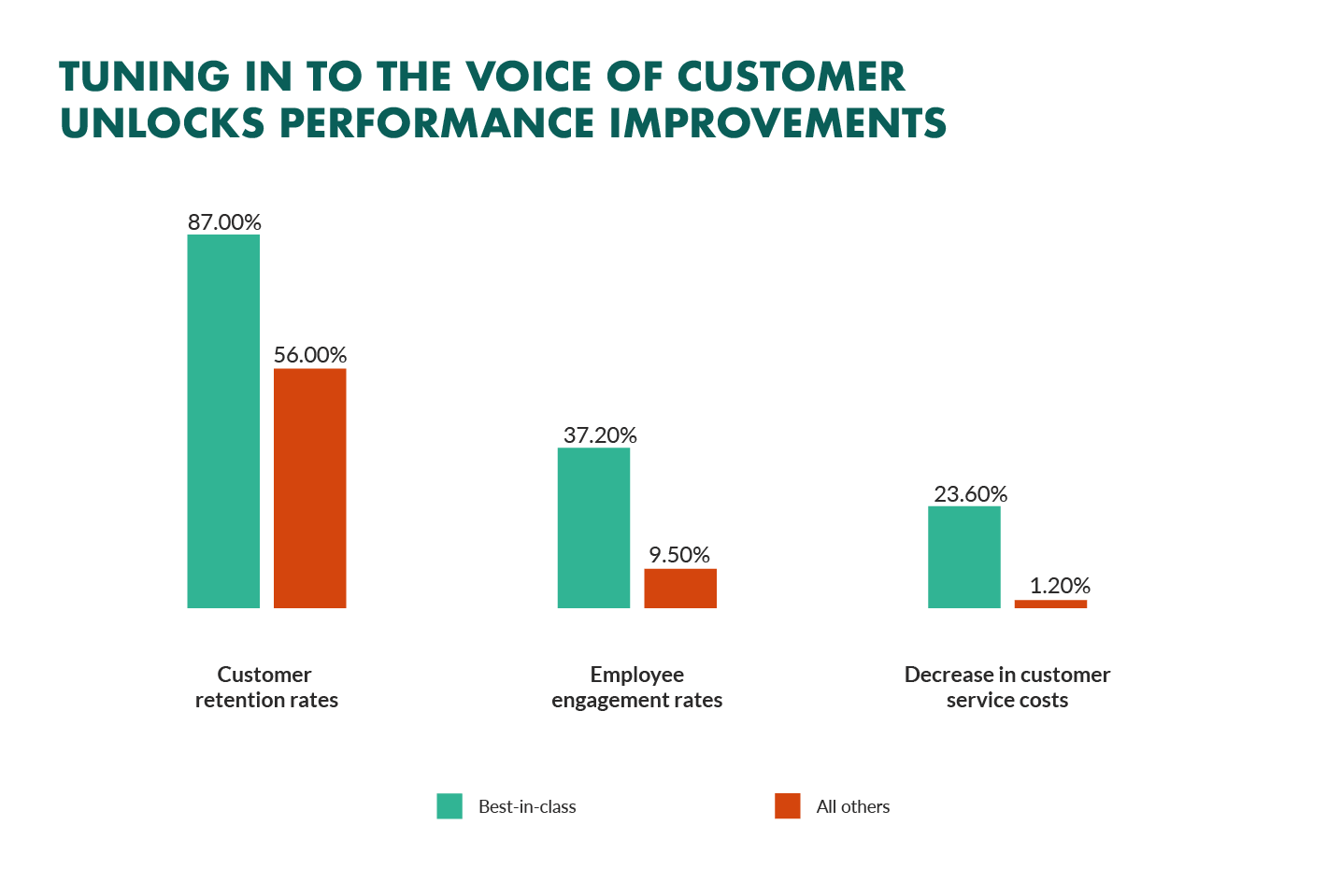
Taking the next step in a relationship funnel requires a mapped out customer journey that uses the data and feedback you’ve collected.
Mapping your customer’s relationship journey
A customer journey map is a helpful visualization of your customers’ interactions at various touchpoints. It tells a story of your customers’ experiences with your business via social media, email, live chat, and other channels.
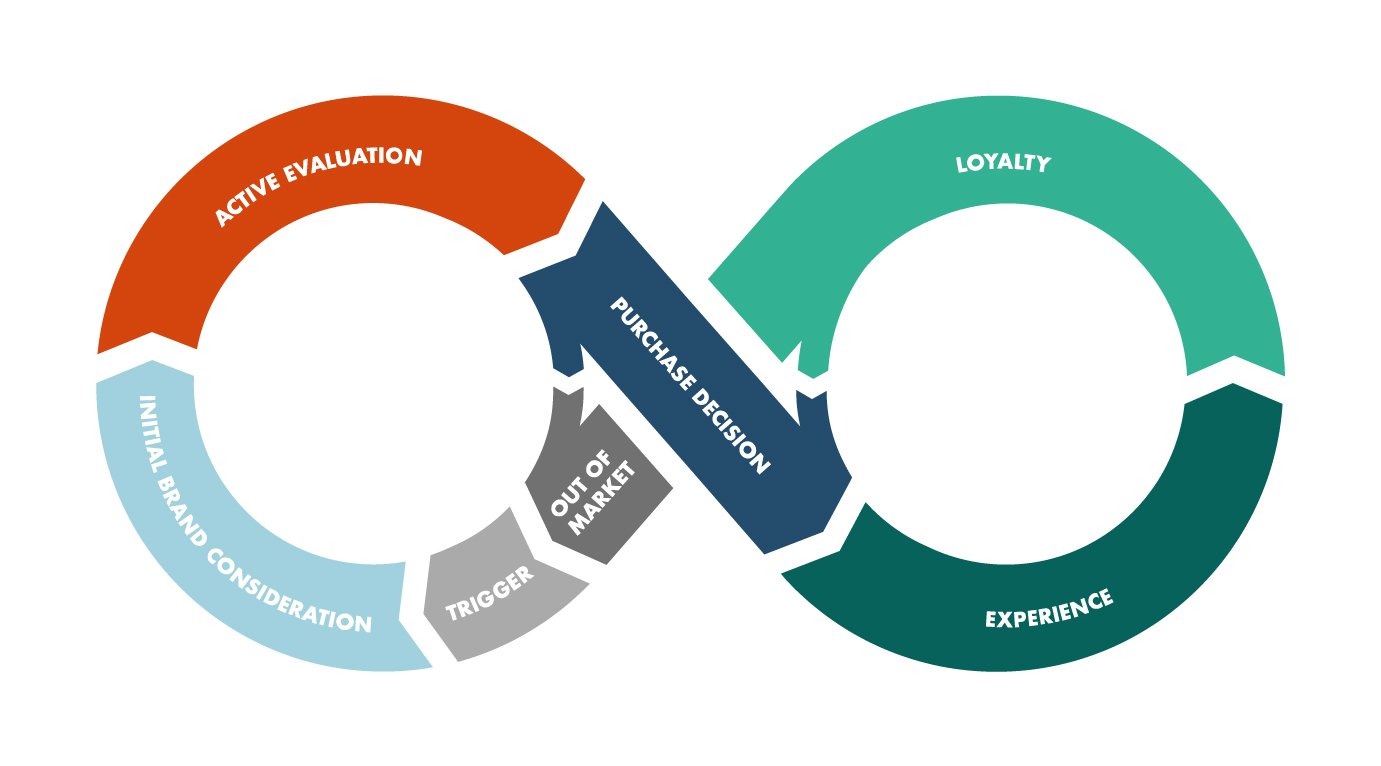
According to a study by Regalix, 76% of B2B marketers say mapping content assets and distributing channels to key stages in a customer’s journey is important to engage with customers and build relationships.
Since there are various touchpoints between your business and your customers, you can break down the customer journey into 3 distinct stages:
- Drawing out the customer journey lifecycle
- Identifying company and customer touchpoints
- Analyzing gaps between existing strategies and expectations
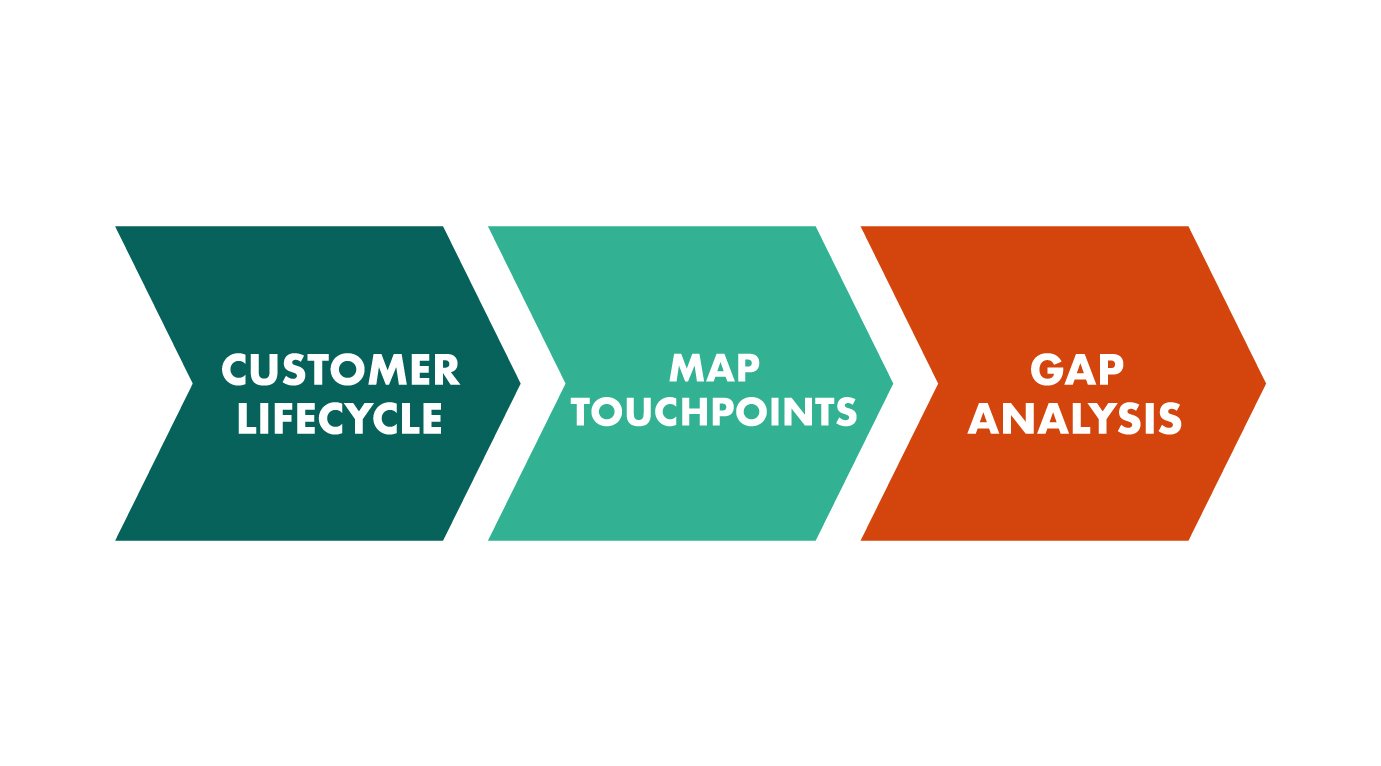
As you create your relationship funnel and map out key touchpoints, remember to focus on your customer’s point of view instead of relying on your own point of view.
Try to put yourself into the shoes of your customers and ask:
- How did you find [ Company, Product, Service ]?
- What features or benefits do you consider important? And, why?
- What is your research process before making the final buying decision?
At SuperOffice, we asked our customers similar questions in August 2018 to see what aspects of our business and customer journey led to a new customer. Our Chief Marketing Officer, Jennifer Lim Lund, found that a “free trial” was not part of our buying process as our customers preferred to sign up for a live demo.
This critical piece of information led to a new website structure that used “Get demo” as the primary call to action, leading to more than double the number of sign-ups from our target audience.
What about your business? What parts of your relationship funnel are critical to your customer’s overall experience? As you begin to uncover the different stages that drive interactions, consideration, and purchasing decisions with your business, you may have a journey map that looks like this:
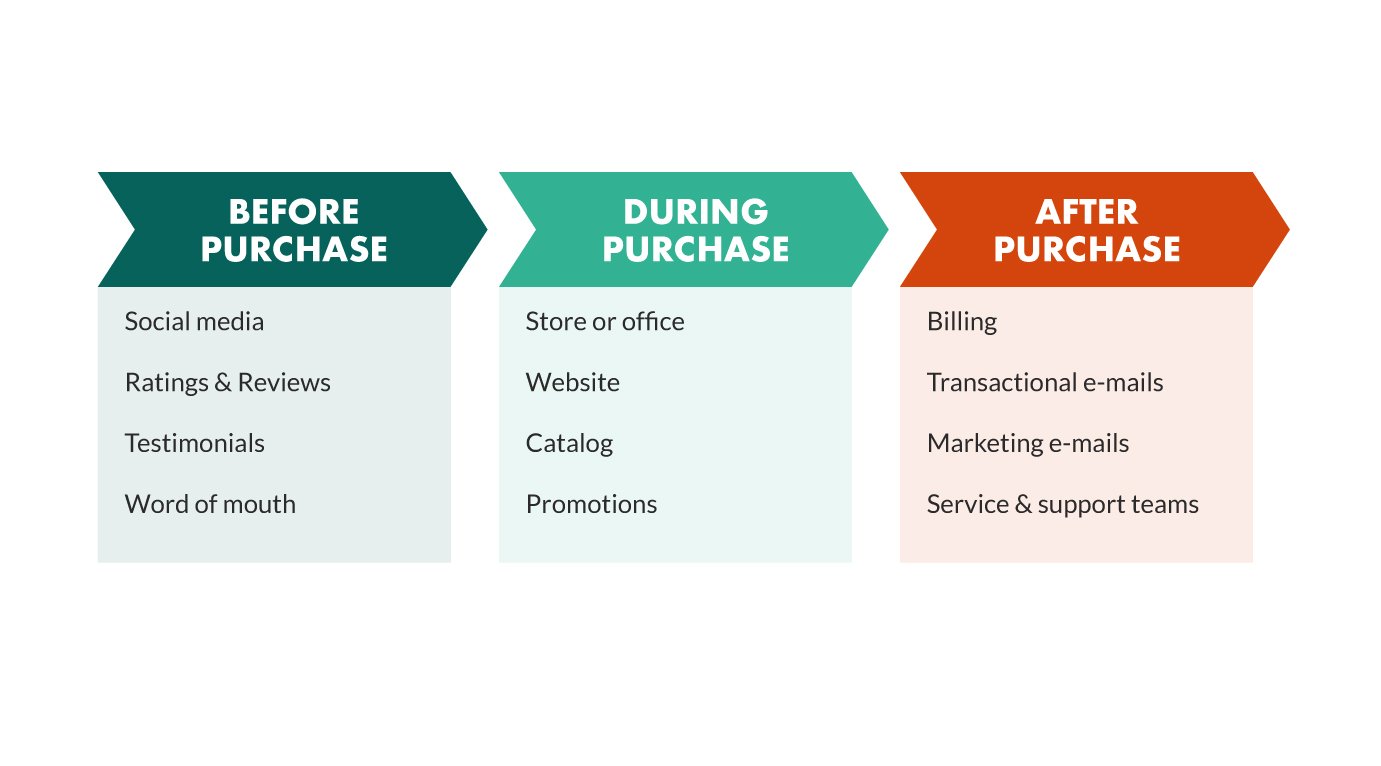
If you can break down the specific phases of your customer’s journey and the touchpoints that build relationships, you can then focus on nurturing those relationships to achieve new growth.
Nurturing relationships
Customers come and customers go – that is the natural cycle of life in every business. However, customers that come and customers that stay are far more profitable.
- Cost of acquiring a new customer can be five times more than retaining an existing customer (Harvard)
- Increasing customer retention by 5% can increase profits between 25 and 95% (Invesp Consulting)
- Chance of selling to an existing customer is 60-70%, while selling to a new customer is 5 to 20% (Marketing Metrics)
As customers flow into your sales pipeline, having an effective nurturing strategy can enhance relationships. Nurturing relationships should serve to provide mutually beneficial exchanges (meaning, giving away something to add value, develop skills, or increase opportunities) without any sales intent.
Easier said than done, right?
When SuperOffice moved upmarket, one of our strategies was to re-evaluate the content we delivered.
By shifting from top-of-funnel to highly targeted, mid-to-lower level content, we could give more relevant and meaningful content that helped current and future customers.
So, go deeper on how to nurture relationships and highlight a few strategies you can use in your relationship funnel.
Relationship nurturing strategies
Nurturing relationships is a time-intensive process. However, with the right strategies in your relationship funnel, you can encourage more customers toward a long-lasting relationship with your business.
Here are 3 relationship nurturing strategies you can start using today.
1. Customer orientation
If you went to college, your first day was probably an orientation to help you feel welcomed and familiar with the school.
Customer orientation is a method of solving a customer’s problems and meeting their needs. Rather than using a sales approach, your support teams are focused on delivering a helpful, human, and holistic service to potential customers.
Since your frontline communicators are the face of your business, give them a guided process that outlines the way customers want to buy instead of the way your business wants to sell to create a frictionless customer experience.
2. Email marketing
Even though communication methods are continually evolving, such as mobile devices and social media, email marketing remains an effective channel for generating leads and sales.
- 77% of consumers use email as their preferred choice of communication
- 80% of business professionals believe that email marketing increases customer retention
- 59% of respondents say marketing emails influence their purchase decisions
Focusing on a customer’s needs through segmentation and personalization can solidify trust and maintain relationships into the future.
3. Social selling
Traditional sales methods include cold calls, sales demos, and lead qualification, whereas social selling relies on social networks, customer engagement, and customer education.
This long-term strategy aims to increase brand awareness, deliver fast responses, and provide value throughout your entire relationship funnel.
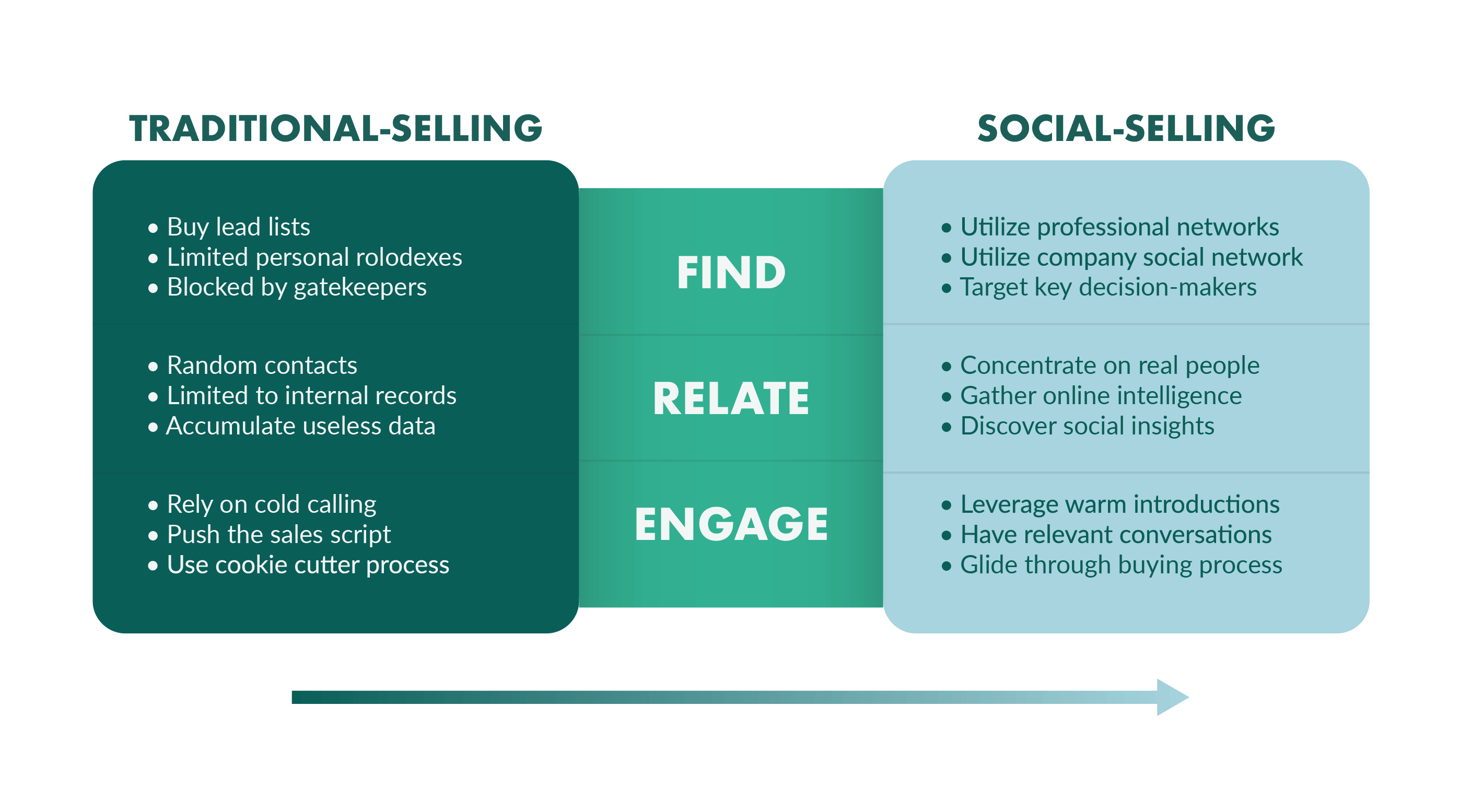
Social selling is an alternative to cold calling as it allows for a more natural way for potential customers to engage with a salesperson. The goal is to address customers’ needs online by listening to the wants, needs, and pain points posted on public profiles and networks.
When executed successfully, 31% of B2B professionals say that social selling allowed them to build deeper relationships with customers.
Relational experience
In today’s competitive environment, companies are doing their best to ensure customer loyalty.
Customers have the power to change their choice freely by comparing products and services online. This allows them to quickly switch to a better option.
Online customer loyalty is the ability to persuade long-term behaviors that are favorable for a company. Loyal customers tend to:
- Continue shopping in the future,
- Recommend products or services to friends, family, and colleagues,
- Increase their purchasing over the next year.
But, how do you achieve customer loyalty?
You need to focus on relational experiences.
Unlike transactional experiences that involve an interaction to achieve a result and nothing else, relational experiences consist of multiple interactions that build trust and become mutually beneficial over time.
For example:
- Transactional experience: at a restaurant, you pay and receive a meal in return. The only experience is the exchange of money and a meal – and a smile if you’re lucky.
- Relational experience: a service provider builds a relationship with you through multiple interactions (i.e. live demo, webinar, sales call, newsletter, etc.). Over time, each interaction is focused on helping you over the long run.
There are many factors that affect customer loyalty: positive experience, feelings, emotions, easy access to information, value, trust, overall satisfaction with the product and service, etc.
And it is only when customers feel a positive experience across all variables, they are inspired to stay loyal. To achieve that a business needs a strategy!
Why do you need a customer experience strategy?
If customer experience (CX) is the sum of every interaction a customer has with your business, including pre- and post-sale experiences, customer experience strategy is an actionable plan to deliver consistent, positive experiences at each of those interactions.
Throughout your relationship funnel, CX strategy helps to align your sales and marketing teams around a common goal: developing positive customer experiences and relationships.
Here are a few factors that influence customer experience:
- 70% of consumers say speed, convenience, helpful employees, and friendly service matter most;
- 42% of consumers worldwide would pay more for a friendly, welcoming experience;
- 65% of US customers find a positive experience with a brand to be more influential than great advertising.
Also, McKinsey’s insights on customer-experience transformation found that a fundamental organizational change of mindset that focuses on the customer, along with operational and IT improvements, can lead to a 20% to 30% uplift in customer satisfaction.
Relational performance
When it comes to your relationship funnel, how can you measure its performance?
In an interview, Jerry Phillips – a US author, business coach and consultant, explains the challenge of measuring the effectiveness of relationship-building efforts:
“Most [businesses] measure the quantity of the work their teams do, but they have few metrics around the quality of the work. They may know how many touches the customer-facing team has before they close an order, but they don’t have a way to measure the quality of the meetings.”
Instead of relying on metrics like sales and conversions, Phillips focuses on five quality activities that strengthen customer relationships:
- Discovery
- Judgment
- Empathy
- Integrity
- Trust
Scoring these variables requires feedback and surveys from customers, i.e. you need to collect data and measure performance.
Here are a few more ways to analyze the quality of your relationship funnel and how it relates to revenue generation for your business.
1. Customer success metrics
Customer success metrics provide you with an overview of your customer relationship efforts’ effectiveness, efficiency, and success rate.
Some common metrics used to calculate customer success include:
- Customer Health Score is used to predict how a customer’s relationships with your business may change in the future;
- Average Lifetime Value estimates the average revenue a customer will generate throughout their customer lifecycle;
- Net Promoter Score rates customers based on their likelihood to recommend a business to a friend or a colleague.
You can use these metrics to better know your customers and to uncover new opportunities for growth in future campaigns.
2. Return on Relationship
Return on Relationship (RoR) is a relatively new term coined by Ted Rubin that focuses on the value you get out of nurturing relationships with customers.
RoR is a simple way of visualizing your relationship-building efforts.
Let’s say you had 1,000 customers last year.
Of those 1,000 customers, you helped 350 (i.e., followed up with customers post-purchase, provided new content via email newsletter, etc.).
Based on your relationships with those 350 customers, 100 came to your business as a referral or a repeat customer.
A simple way to calculate your RoR would be to divide the total number of referral and repeat customers by the total number of customers over the last year:
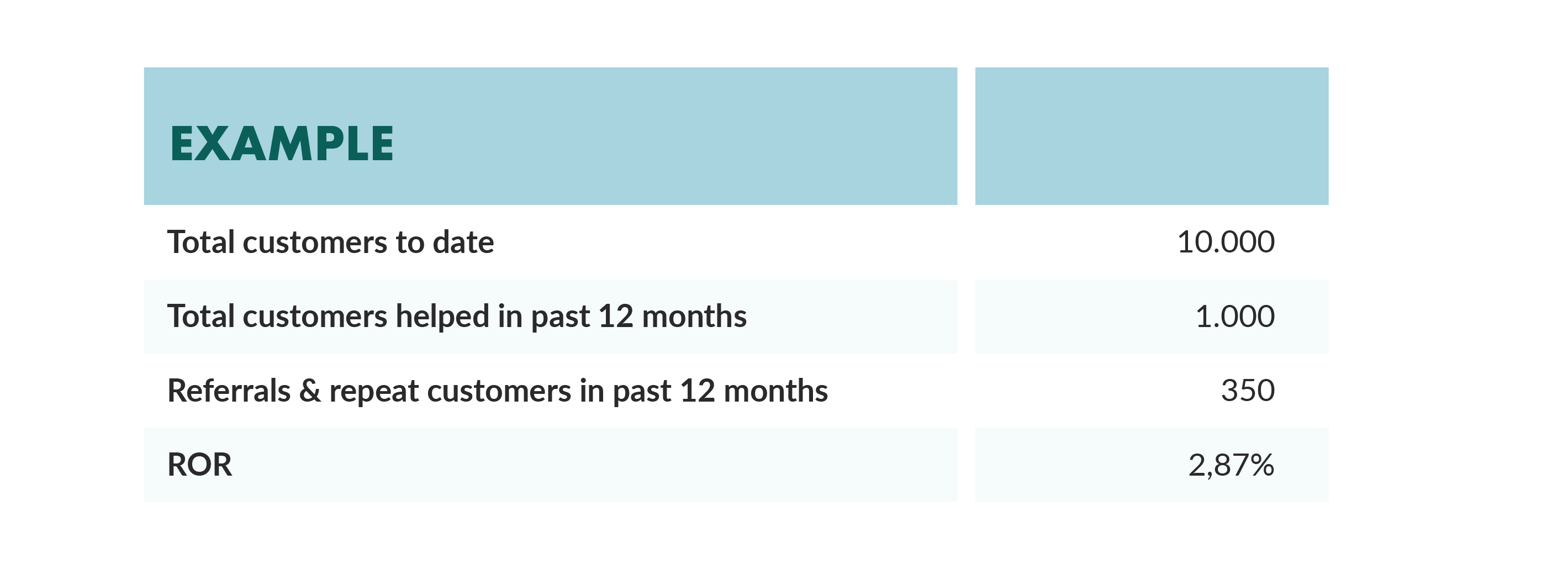
What does this example reveal about RoR?
It shows that 5% of your customer base is made of referrals and repeat customers based on your relationship funnel.
And the best part is that this number can easily be increased as you invest more in your relationships with customers.
Imagine if you doubled or tripled your RoR?
3. Defining your relationship funnel KPIs
The success of your relationship funnel comes down to how well you define your key performance indicators (KPIs).
However, which relationship-building activities are measurable and which result in growth?
Here are a few examples of traditional KPIs that are easy to track and to calculate a quantitative ROI:
- Completing X amount of sales meetings per week
- Sending follow-up emails after a sales call
- Sending emails to X amount of customers per month
Meanwhile, relationship-based KPIs are more related to your company’s overall team performance and customer experience. Instead of tracking the number of sales, sign-ups, and conversions, your relationship funnel can measure:
- Total number of customers helped over a period of time
- Engagement across social media channels
- Impact of implementing new personalization strategies
Ultimately, your company’s relationship KPIs depend on the structure and focus of your relationship funnel.
Conclusion
Even though the end goal of both relationship and sales funnels is to generate revenue, the strategic approach of how to get there is not the same.
Relationship funnels are focused on establishing long-lasting relationships with customers and can be broken down into 4 main categories:
- Building relationships – Relationships start the moment a person discovers your business and requires you to have a deep understanding of their wants and needs.
- Nurturing relationships – Take a long-term approach to engaging and interacting with customers, with an aim to deliver a positive customer experience.
- Relational experience – Customer experience is the foundation of customer relationships and can result in customer loyalty and referrals.
- Relational performance – Measuring your relationship-building efforts depends on qualitative and quantitative data points to find correlations that are successfully driving growth.
If you’re looking to spark exponential growth for your company, you need to develop a funnel that invests in mutually beneficial relationships with both your new and existing customers.
Customers want to stay loyal to the companies that win their business, but that requires a deep understanding of their needs to create a frictionless, positive experience. With a CRM system, you can maintain oversight on all interactions, find opportunities to exceed expectations, and inspire more long-term relationships with your business.
